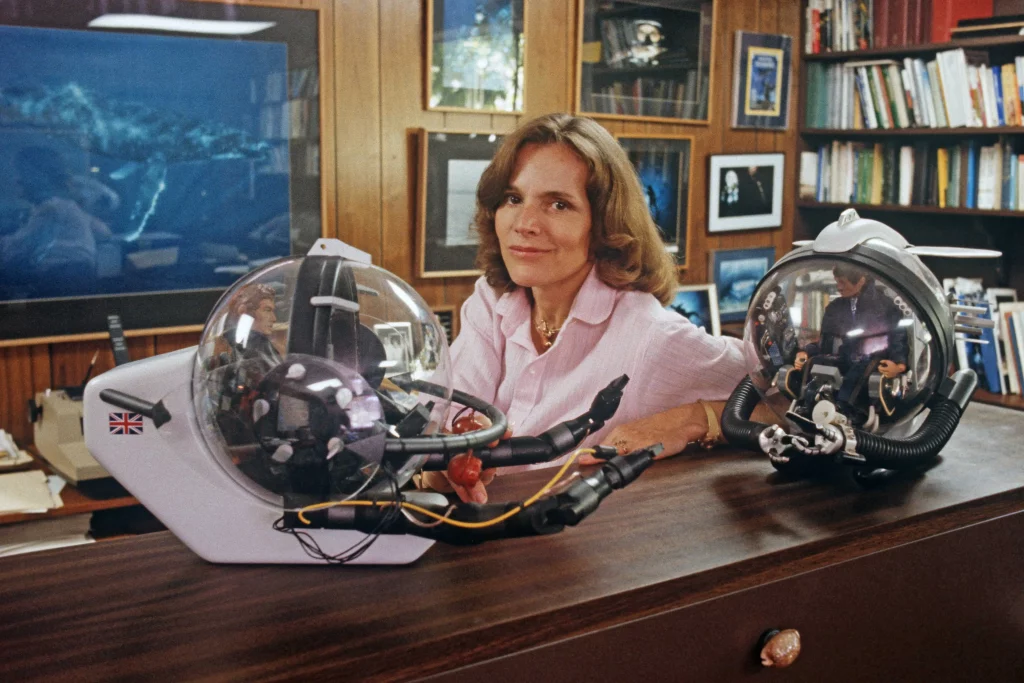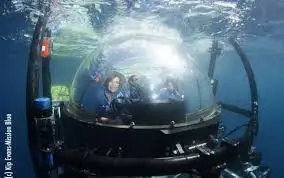
From holding the record for the deepest walk on the ocean floor to being the first female chief scientist at NOAA, Dr. Sylvia Earle, who’s been dubbed titles such as “Hero for the Planet”, “Champion of the Earth”, and “Her Deepness”, is no doubt one of the first and most significant forces behind the current global initiatives to protect the oceans.
Sylvia Earle and Her Legacy
Dr. Sylvia Earle was fascinated with nature at an early age. She earned her BS in botany at Florida State University at 19, and a master’s in botany at Duke at 20.
While working on her doctorate at Duke, Dr. Earle ventured on various voyages across the Indian Ocean, the Galapagos Islands, the Chilean Coast, and the Panama Canal before becoming resident director of the Cape Haze Marine Laboratory in 1965.
Using SCUBA equipment to document marine life for her PhD, she became one of the pioneering scientists in underwater research. Up until then SCUBA diving had primarily practiced by military personnel, oceanographers and scientists. However, recreational diving was growing in popularity.
Career Achievements
After receiving her PhD, Dr. Earle became involved in numerous underwater expeditions and research projects leading to major oceanography contributions.
Dr. Earle later became involved in several underwater expeditions to observe and document experimental underwater habitats. It was during the Man-in-Sea project that Dr. Earle became the first scientist to descend 100 feet using a submersible to enter the habitat.
Although she was rejected from the Tektite II project (the government didn’t want men and women living together), Dr. Earle was motivated to form her all-female team to venture to and study the marine life at the site in 1970.
Other achievements include exploring a battleship graveyard, following sperm whales, walking untethered along the sea floor at the lowest depth recorded, and forming 2 companies that helped design and build underwater vehicles.
Dr. Earle has overall authored over 200 publications and led over 100 expeditions (totaling over 7000 hours underwater).

Mission Blue
The main goal of the Mission Blue initiative is to encourage the exploration and protection of our world’s oceans. This includes increasing public awareness, access, and support for several designated marine protected areas known as Hope Spots.
Through media, expeditions, tools (i.e. ArcGIS), and over 200 conservation groups, organizations, and NGOs, Mission Blue aims to increase global public support for ocean protection.
With enough public support, there’s a chance that the protection of these Hope Spots can together form protection of up to 30% of the overall world’s oceans by 2030 (30×30 plan).
As recently as 2022, there were 151 Hope Spots (with 14 being added in that year alone).
The Impact of Mission Blue
Hope Spots vary significantly in size and location, but some things they have in common include:
- Abundance of common or unique marine biodiversity
- Requires further protection
- The potential of reversing damage
- Economically and culturally significant
- Presence of natural processes (i.e. spawning grounds)
Thus, because of these attributes, each Hope Spot consists of some kind of unique biodiversity that is significant to both the local marine and human communities.
Over the years, Mission Blue has been involved in many successful conservation efforts. Some that took place in 2022 alone include:
- Earle joined the presidents of Ecuador, Columbia, former president Clinton, and other dignitaries in expanding the protection area around the Galapagos
- Portugal expanded its protection area around the Azores Archipelago and Madeira to meet the 30×30 commitment
- At the UN Climate Conference (COP27), the Mission Blue team introduced the Great Fringing Reef Hope Spot, and Egypt committed to protecting all of its coral reefs
Educational Outreach
Public outreach is one of the central forces driving the Mission Blue initiative forward, and to do so, the team uses various communications campaigns (i.e. documentaries, social and traditional media, and tools like Google Earth and ArcGIS) to bring Hope Spots to the world.
As a nonprofit, Mission Blue collaborates with various organizations, foundations, and educational institutions to drive its campaigns and expeditions. Some expedition sponsors/partners include SC Johnson, Code Blue Foundation, BBC, Nature Conservancy, Rolex, and Marine Conservation Institute, among many others.
Policy and Advocacy
As an ocean ambassador, Dr. Earle joins the policy team to meet with world leaders and heads of state to discuss ocean protection matters and enlist their support in improving ocean conservation actions. These are also conducted through interviews and international conferences.
As recently as 2022, Mission Blue has participated in numerous climate and biodiversity policy events (i.e. Blue Climate Summit, UN Ocean Conference, etc.) and helped plan the 2023 Antarctic Climate Conference at Sea. These events are used to advocate for more sustainable ocean practices by spreading knowledge on the effects human activities and climate change have on the oceans to better develop policies to tackle them.
Famous Female Scientists Today Inspired by Sylvia Earle
Dr. Earle has influenced many female scientists during her 6 decades of ocean conservation experience, a few of which we’ll look at here.
Jane Lubchenco
Former Undersecretary of Commerce for Oceans and Atmosphere and former NOAA Administrator, Dr. Lubchenco is an environmental scientist and marine ecologist whose research has influenced policymakers in reducing the impact of human activities on the environment.
Ayana Elizabeth Johnson
Founder of Ocean Collectiv and cofounder of Urban Ocean Lab, Dr. Johnson is a marine biologist and policy expert who developed ocean-climate policies in coastal cities.
Kristen Marhaver
A National Geographic Explorer, Dr. Marhaver’s work focuses on coral reproduction and survival. The first person to grow the Caribbean pillar coral, Dr. Marhaver is currently working on new ways to grow corals so that entire reefs may be rebuilt.
Vision for the Future
As a scientist who’s a pioneer for both ocean conservation and women scientists, Dr. Sylvia Earle has left a legacy decades in the making that’s affected both people and animals worldwide. With projects such as Mission Blue along her paved path, Dr. Earle’s legacy will continue to shape the marine/environmental science fields for decades to come.
“I saw the after influence of what we can do to the natural world. Think of the world without an ocean. You’ve got a planet a lot like Mars. No ocean, no life.”
Sylvia Earle
